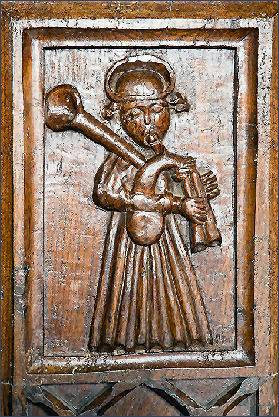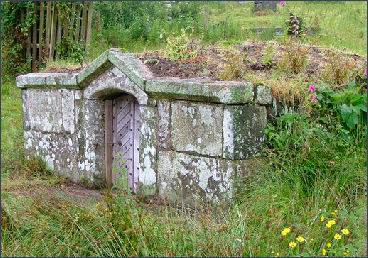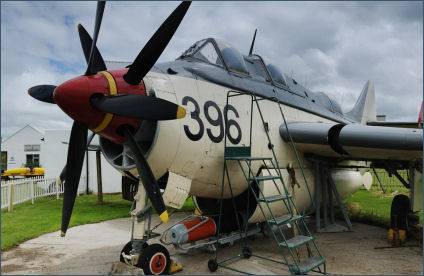Davidstow
OS Grid ref:-SX 151872
 Davidstow is situated on the northern edge of Bodmin Moor, and lies about 3 miles from Camelford. The village is known in Cornish as Lanndhewi, in the past it was referred to as 'Dewstow' deriving from 'Dewy' the Cornish word for David.
Davidstow is situated on the northern edge of Bodmin Moor, and lies about 3 miles from Camelford. The village is known in Cornish as Lanndhewi, in the past it was referred to as 'Dewstow' deriving from 'Dewy' the Cornish word for David.
Davidstow Moor has an airfield, used by small planes and a flying club. The Davidstow Airfield and Cornwall at War Museum, usually known as the Cornwall at War Museum for short, is located on part of the old World War II airfield RAF Davidstow Moor.
Davidstow Cheddar' and 'Cathedral City' brands of cheese are produced at the Davidstow Creamery which has been operating in the village for over fifty years, producing cheese using the water from Davidstow Holy Well.
Legend states that the village church was founded by Saint David, patron saint of Wales, in the sixth century, whilst visiting his mother at nearby Altarnun. The building dates from the thirteenth century but was heavily restored in 1875 so that little original work remains.
 Both the nave and the east windows are wider than is usual in a Cornish church. It contains some interesting bench ends, one of which (pictured left) depicts a Cornish bagpiper.
Both the nave and the east windows are wider than is usual in a Cornish church. It contains some interesting bench ends, one of which (pictured left) depicts a Cornish bagpiper.
Local history relates the tale of the murder of Davidstow resident, eighteen year old maid servant Charlotte Dymond which occured in 1844 on Bodmin Moor. Her lover, Mathew Weeks, was hung for the offence largely on circumstantial evidence. Charlotte's ghost is said to haunt the slopes of nearby Rough Tor where the murder was committed. A memorial was erected in her name and stands a few yards from the car park below Rough Tor. She is buried in St. David's churchyard.
Davidstow is close to St Kitt's Hill , Brown Willy, which rises to 1,378 feet (420 m) and is the highest point on the Moor and of all Cornwall and Rough Tor which is the second highest point. Crowdy Resevoir, where in the winter months flocks of starlings roost, also lies nearby.
The Davidstow Holy Well, (pictured left) is of medieval origins and is located in a boggy hollow in a field to the north east of St. David's church.
The well has been twice restored, some of the blocks of granite blocks,are understood to have been taken from a ruined chapel in Lesnewth at the time of the first restoration.
The Davidstow Airfield and Cornwall at War Museum
 The Davidstow Airfield and Cornwall at War Museum is situated on part of the old WW2 airfield RAF Davidstow Moor. The museum, which covers about two acres, officially opened in June 2008 with just a few buildings and artifacts but since then has grown year by year.
The Davidstow Airfield and Cornwall at War Museum is situated on part of the old WW2 airfield RAF Davidstow Moor. The museum, which covers about two acres, officially opened in June 2008 with just a few buildings and artifacts but since then has grown year by year.
There are now 18 separate buildings and literally thousands of items for the visitor to see as well as other larger exhibits in the museum grounds. Although extensive information is displayed about this former RAF station there is a very definite tri-service theme throughout the museum. Individual buildings have displays and information on every RAF station that existed in Cornwall together with coverage of the Royal Navy (including the Royal Marines and Fleet Air Arm) and the British Army.
Civilian activities are not forgotten either as many displays show the part that they played in various conflicts. Not just British Forces either as American and German artifacts are also on display. Although the emphasis is largely on WW2 there are exhibits covering both WW1 and the Falklands, when Davidstow Moor was used for training purposes.
The starting point of a visit to the Cornwall at War Museum is the cinema which has a film showing how the museum started, useful for comparing the images of the previously derelict buildings with what you will see later on. Most of the buildings have audio/video systems which will increase both your understanding of the content and also your enjoyment of the visit.